Australian Chardonnay: The Judgment of Paris Part Two (Oz Edition)
by Ken Gargett
There are times when one could be forgiven for thinking that the Judgment of Paris was merely a vinous fairy tale and that any suggestion that wine can even be made outside France is nothing sort of the gravest heresy.
We are looking at the Judgement of Paris from the perspective of wine, not the other Judgement of Paris, when Paris of Troy selected Aphrodite because she bribed him with Helen of Sparta, thereby setting off the Trojan War.
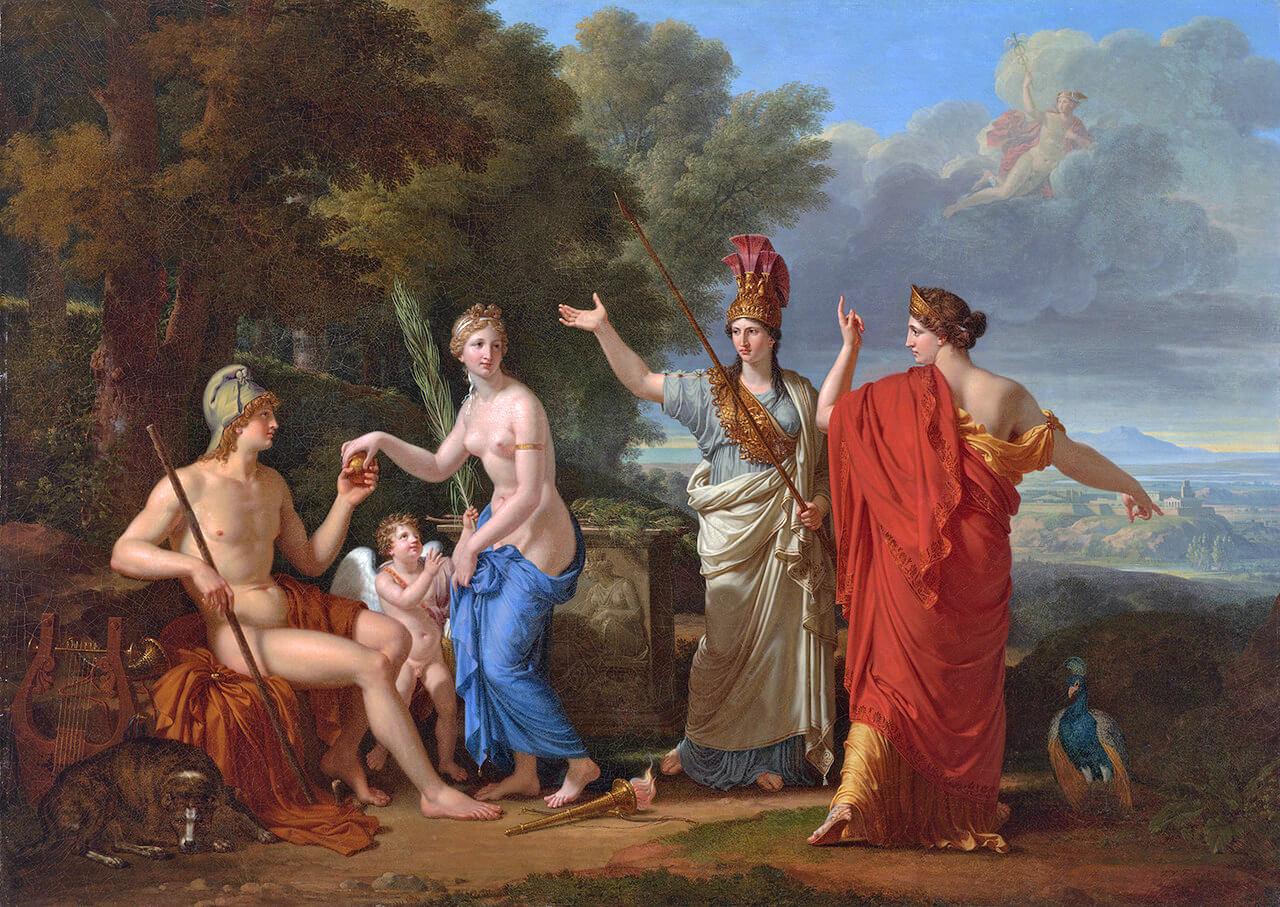
The Judgment of Paris by François-Xavier Fabre (1808)
For those not familiar with what was a monumental shift in the tectonic plates of the world of wine, the Judgement of Paris is a legendary moment when the spotlight’s glare revealed that it was entirely possible to make great wine outside France. Of course, there was already some compelling evidence of that in the form of the great ports from Portugal, extraordinary Rieslings from Germany, some brilliant wines from both Italy and Spain, but it does occasionally rather seem that they were considered more outliers and exceptions than anything more serious.
Please do not think that this is in any way intended to demean French wine. France has been responsible for so many of the great wines of the world and continues to do so. Can anything really compare with the very best red Burgundies, or great Champagnes, the incredible Sauternes or so much more.
Back in 1976, a young English wine merchant, Steven Spurrier, working in Paris, thought it would be a bit of fun to hold a tasting comparing top Californian Chardonnays with the great white Burgundies and top Napa Cabernets with Bordeaux. It could so easily have disappeared into the ether of history had not a Time Magazine journalist, George Taber, attended and submitted a short report to the magazine.
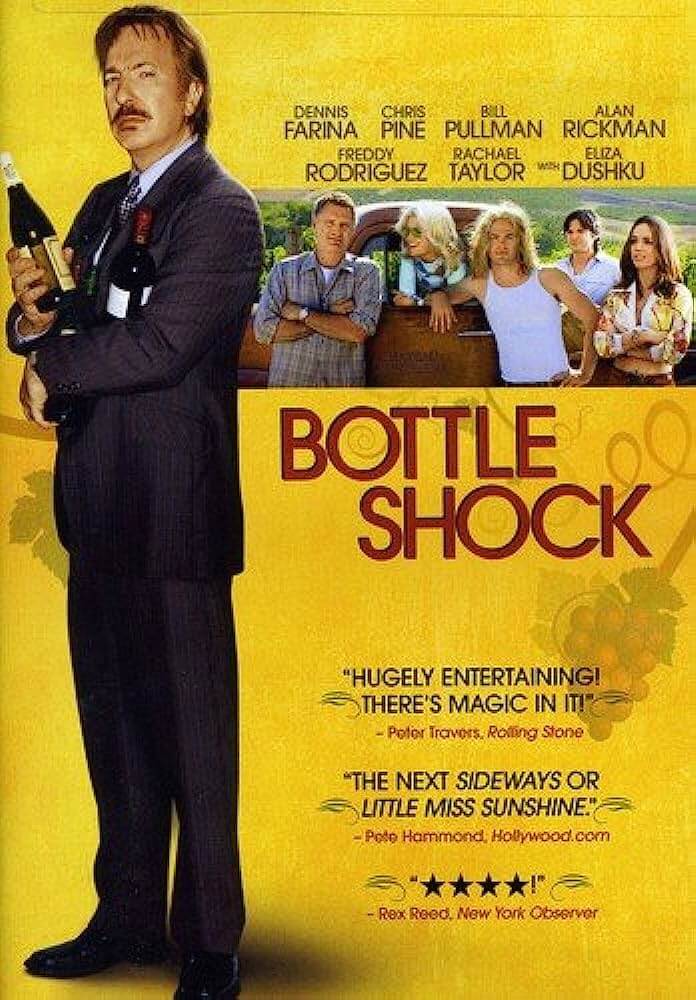
The event was later turned into a book by Taber, and films. The most famous was ‘Bottle Shock’, starring Alan Rickman as Spurrier, with Chris Pine and Bill Pullman. At the time, there were various legal threats about authenticity and accuracy and rights, between competing interests (I’m not even sure the second intended film ever saw the light of day). Whilst the general gist of the film is correct, it does seem that Hollywood has taken historical accuracy with a large grain of salt.
Back to the real thing, the wines were all tasted blind. The judges were an array of some of France’s biggest names in wine. It was all seen as a bit of fun until several French winemakers got hurt. Among the judges, all of whom were French bar the organizers (Spurrier and his partner) whose votes were not counted, were members of the Appellation d’Origine Controlee Board, the Wine Institute of France, famous winemakers, some of the greatest sommeliers working at top Parisian restaurants and editors of French wine magazines.
———————————————————————————
———————————————————————————
The judges graded each wine out of 20 and then scores were tallied. There was uproar when the results were announced. After the event, Odette Kahn, the editor of ‘La Revue du vin de France’, was so outraged by what had happened that she demanded her ballot back (can’t have that pesky evidence floating around – perhaps a career in politics awaited her) and then criticized the tasting, although given she was one of the judges who made the decisions, it is a bit hard to fathom quite why and what she was attacking.
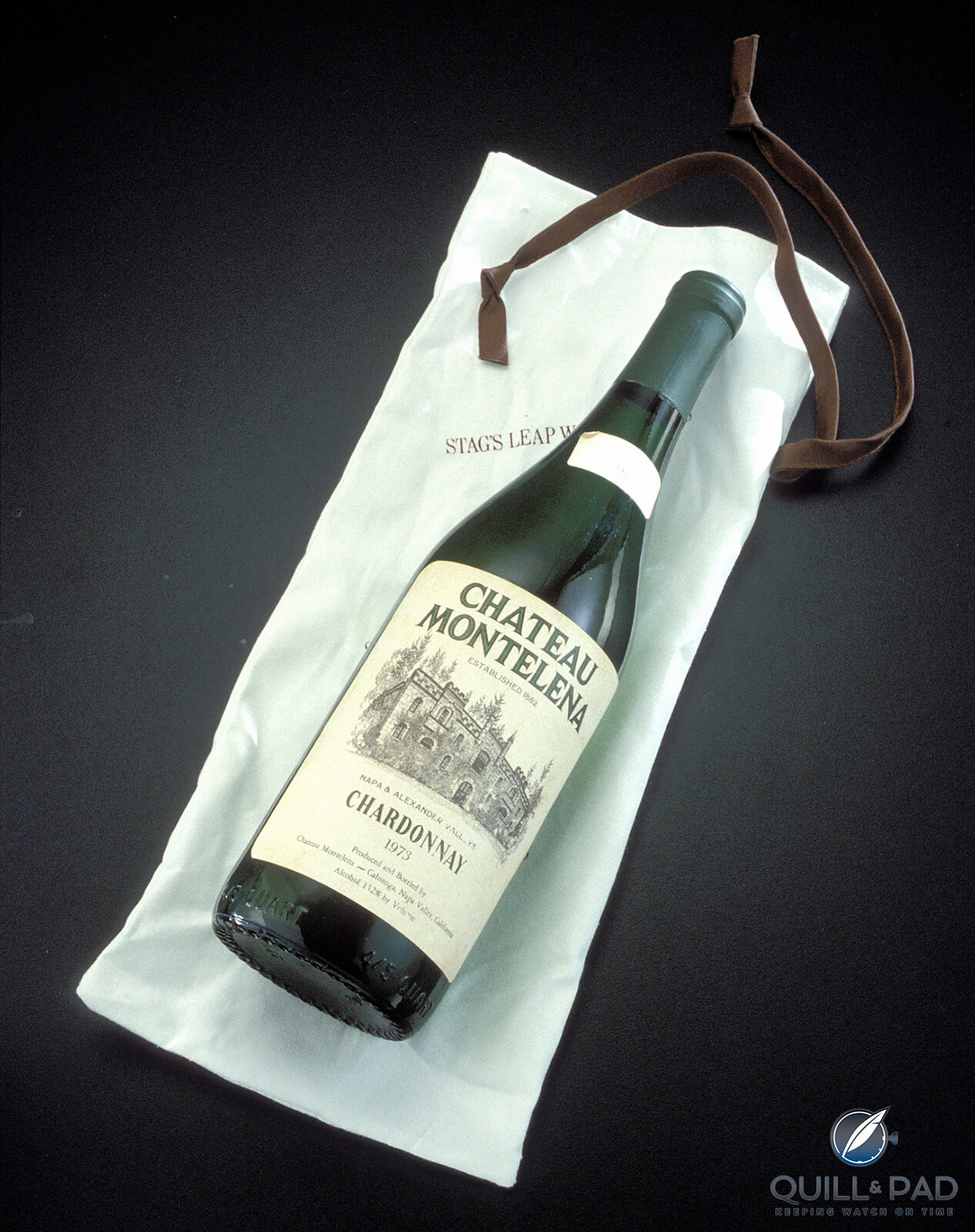
1973 Chateau Montelena Chardonnay (photo courtesy National Museum of American History)
In the Chardonnay class, a Napa wine topped the voting. The Chateau Montelena 1973 was well ahead of the next closest, a Meursault. Even worse, the American Chardonnays took four of the top six places.
It got worse for France. When the Cabernet v Bordeaux results were announced, the winner was the Stag’s Leap Cabernet from 1973. Unthinkable. It topped the Mouton Rothschild 1970, with the 1970 Haut Brion and 1970 Montrose 3rd and 4th respectively, so it was obvious that France could not even take comfort in claiming that they did not put their best foot forward.
What was just a bit amusing was that Stag’s Leap got the top spot by scoring high in almost every judge’s consideration, but only one had it as their sole top red. No prizes for guessing that the judge who scored it so highly was none other than Odette, who, by the way, had another Napa Cab in clear second place. How embarrassing! No wonder she wanted the evidence destroyed.
When news filtered out – remember that this was well before the internet meant the world knew everything as it happened – it created a sensation. For New World winemakers, it was vindication. In truth, it really was astonishing as France did pick wines from what were considered then to be great vintages, and estates which had been making wine for centuries and were seen as world leaders. On the other side, for some of the Californians, the wines entered were the very first they had made.
All of this did not go down well in France, though the results were not mentioned in the national press for some time. As they became known internationally, the French journalists were left with no choice. ”Laughable”, declared Le Figaro, claiming that the results “cannot be taken seriously”. Le Monde echoed these sentiments.
The French did put up the argument that their wines would undoubtedly age better over time and that this had not been taken into consideration. The tasting, with the same wines, has been recreated on a couple of occasions down the track, including in 2006, to assess this. The American wines did even better at these tastings.
But sometimes, I think that there are people who simply think that the entire thing, and the wines which have followed over the decades, as nothing more than a fanciful aberration.
———————————————————————————
———————————————————————————
We have seen wines from the impressive lunch/tasting events held irregularly by a friend, reported in Q&P, usually as they pertain to great Burgundy. He is always keen for an interesting theme, so I suggested grand cru level New World Chardonnay and Pinot Noir. I was interested to see if we could find some that sat alongside the best, but also on just how the group would respond. Not with flying colors, it would seem.
The group, I should stress, contains no one from France, so no blaming them or suggesting bias. This is all locals. There are, however, more than a few who have become somewhat entrenched in their views. Well before a bottle was opened, several had declared that the event would be nothing more than a parade of third level quality wannabees, which could never ever aspire to what we enjoy from Burgundy. Some felt it a waste of a lunch. Others were more than happy to look at it fairly.
The bottom line? The general consensus, with some firmly resolved never to give an inch to the New World pretenders while others were prepared to live in the real world, was that while we make some wonderful Pinot Noir – Bindi, Bass Phillip, Tolpuddle, Oakridge, Main Ridge, Mt Mary – coming from an array of regions – the Yarra Valley, Tasmania, Adelaide Hills, Macedon, Gippsland and counting – it is the Chardonnays where we come closer to the pinnacle.
But that in itself is a bone of contention. The concept of ‘come close’, suggests that the aim is always to make something replicating the style of white Burgundy. It isn’t and it shouldn’t be. Different terroir will always mean that the wines are different. That does not automatically make one better than another. Just different.
Yes, the great wines from Montrachet, Chevalier, Batard, Corton Charlemagne and other brilliant Grand Crus are as glorious as white wine can be. I don’t think anywhere in the world tops them. Given that their prices usually start in the low four figures and skyrocket from there, so they should be. It also does not mean that there are not plenty of overpriced and ordinary examples from the region.
The best of Australian Chardonnay differs from white Burgundy but can still be thrilling. Terroir brings about those differences – of course, definitions of exactly what is terroir vary. Does it include decisions made by winemakers? For me, absolutely. So everything from irrigate to non-irrigated vines; types of oak, new or aged and how long does the wine spend there; malolactic fermentation or not: a million other tiny decisions making a big difference.
If one was forced into a broad generalization, white Burgundy is more minerally, perhaps more concentrated, leaner with more intensity and precision, and a higher level of acidity. Of course, generalizations…
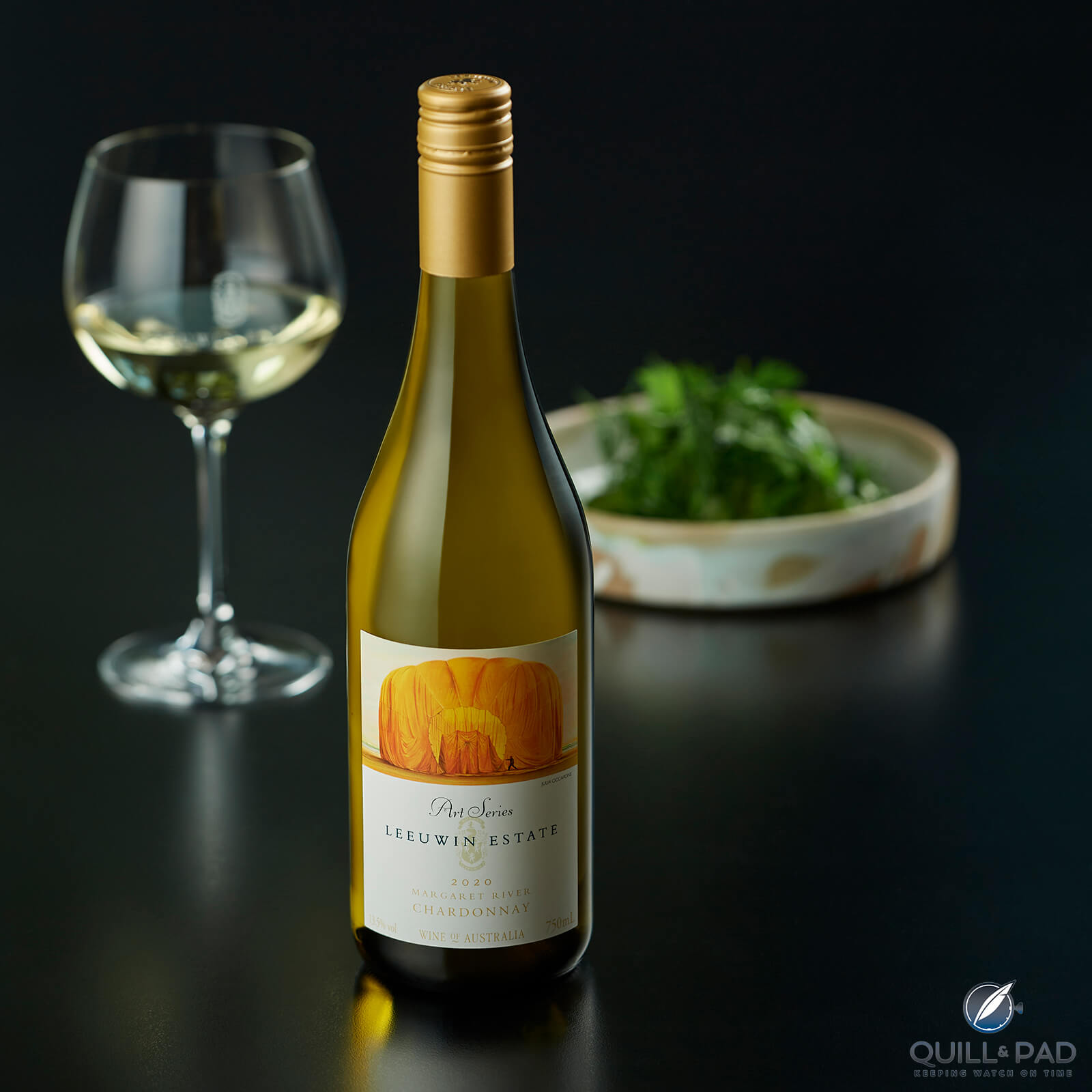
Leeuwin Estate Art Series Chardonnay 2020
Chardonnay stars in many regions these days but be careful of preconceptions. Californian Chardonnay is often thought to be big and buttery. Australian Chardonnay was once so dependent on oak that consumers were literally mistaking the taste of oak for that of the grape. The pendulum swung way back and we had lean, slightly minerally, laser-like examples where oak seemed non-existent. We seemed to have settled for a happy medium, these days, well balanced and with more stonefruit and tropical notes, with the oak largely in balance.
For me, the trick is to enjoy all styles. Why anyone would want to limit their experiences, and the potential pleasure it can offer, is beyond me.
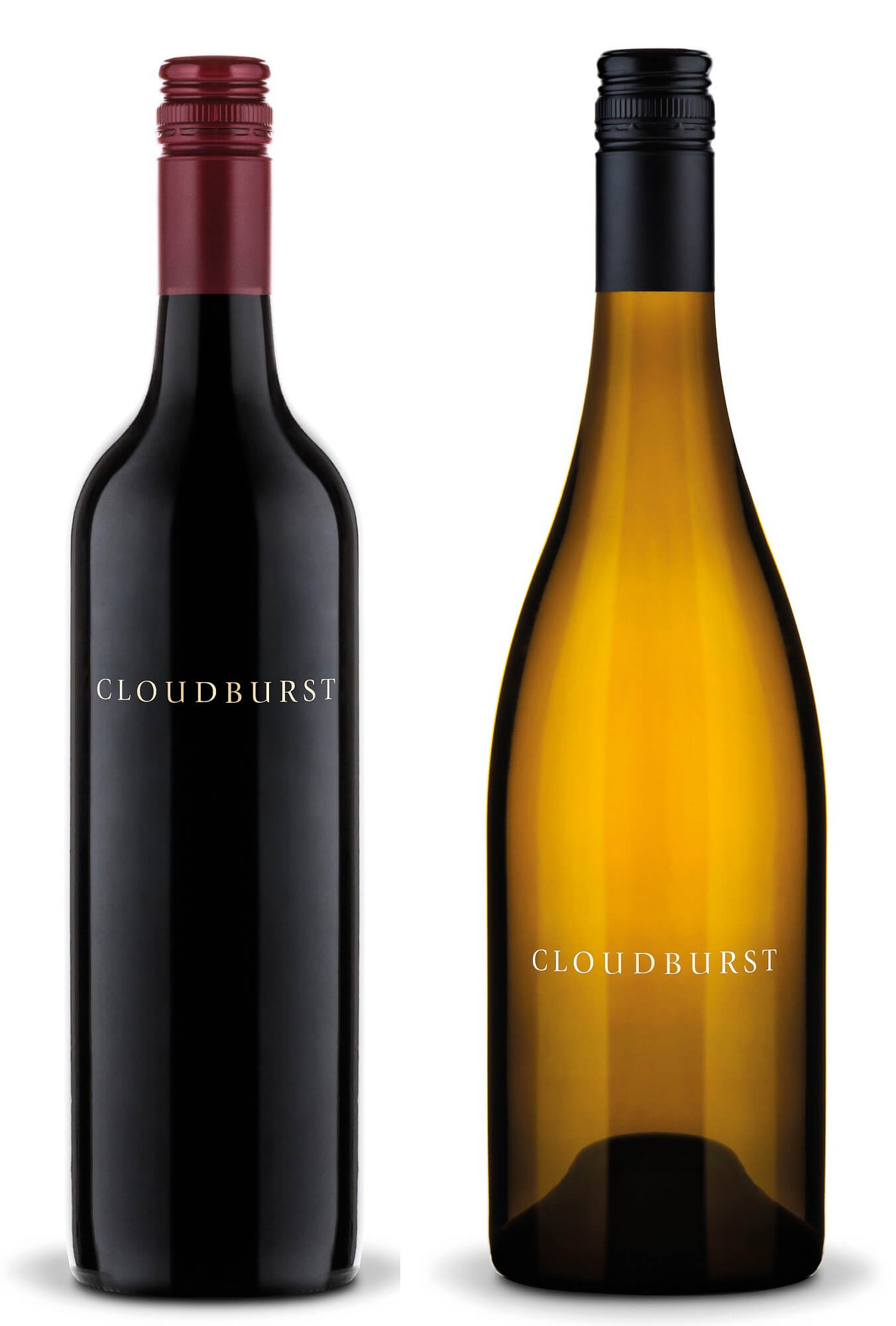
Cloudburst Wines
In Australia, Margaret River might have a relatively short history but it is already ground zero for great Chardy (and Cabernet, but that is for another day). We have featured the wines from luminaries such as Cullen’s (undoubtedly one of the New World’s greatest Chardonnay producers, with the Kevin John series and their limited release wines), Cloudburst (much newer, smaller, harder to source and also more hit and miss – but when they hit, spectacular) and Leeuwin Estate who led the way for Chardonnay in this country for so long.
Other must-try Chardonnays from Margaret River in Western Australia are Pierro, Moss Wood, Vasse Felix (their Heytesbury Chardonnay sits with the very best in the land), Howard Park, Woodlands, Deep Woods and Fraser Gallop to name a few.
Outside Margaret River, we have many wonderful Chardonnays – Coldstream Hills Reserve, Mt Mary, Oakridge, Yering Station, Giant Steps (Yarra Valley); Ten Minutes by Tractor, Kooyong, Main Ridge, Paringa Estate, Prancing Horse, Yabby Lake (Mornington Peninsula); Curly Flat, Bindi (Macedon region), Tolpuddle, Freycinet, Dawson James, Dr Edge (Tasmania); Shaw & Smith M3, Tapanappa, Grosset (Adelaide Hills); and even Tyrrells Vat 47 from the Hunter Valley (I say, ‘even’ because the Hunter is seemingly an unlikely place for great Chardonnay and yet this one has been a star for decades); and we have only scratched the surface.
Allow me to highlight two which, in terms of sheer quality, sit with the world’s greatest. Personal preference (and in some cases, prejudices) may mean you would rather go with wines from the heart of Burgundy, and that is fair enough. What is indisputable is that the $100 to $200 you’ll pay for these two Aussies makes them infinitely better value than the $1,000 plus (and sometimes, plus, plus, plus) for great white Burgundy.
We have not touched on Chardonnay from the big boys. There are many, none more so than Penfold’s Yattarna.

Penfolds Yattarna Chardonnay 2021
What seems like eons ago now, but must have been only back in the 1990s, Penfolds got a little tired of being told that they were pretty good with reds but could not make a decent white to save themselves. So they set out to make Australia’s greatest white (whether they have achieved that is a matter of opinion, but the result, Yattarna, is certainly a superb wine).
During the development stage, Penfolds was as forthcoming with inside information as they always are – in other words, not at all – and so there was endless debate as to whether it would even be a Chardonnay. Many thought a Hunter Semillon or Clare Valley Riesling the more obvious choice, because these wines could not only age for many years but reach the highest level of quality, and because they were both so quintessentially Australian. But with so much of their market in the international realms, it had to be Chardonnay.
The first was the 1995, released in 1998. Over the years, the fruit for Yattarna has been sourced from all over – if memory serves, there was even a dollop of McLaren Vale Chardy in that first one. These days, Tasmania, Tumbarumba and the Adelaide Hills usually provide the fruit, or at the very least, the vast majority of it. So, what is immediately evident is that this takes it away from almost all the other wines we have mentioned, from anywhere. They tend to be single vineyard wines. Yattarna is not even a single region wine.
The word ‘Yattarna’, means ‘little by little’, and it reflected how Penfold’s developed the wine, and by which they continue to look for tiny improvements. The wine is sub-titled ‘Bin 144’ (Penfolds do like to give their wines bin numbers) as there were 144 attempts at blends before they originally got it right.
No question that a truly great vintage throughout so many Australian regions, 2021, gave the latest release every opportunity to stand up. And that is exactly what it has done. For me, the best Yattarna yet released. For the record, it saw nine months in French oak barriques, 70% of which were new.
———————————————————————
———————————————————————————
As mentioned, I can’t recall a better Yattarna than this one, going all the way back to the initial 1995. An immaculate and beautifully elegant Chardonnay, wonderfully refined, pristine, exquisitely structured, impeccable balance and finesse. Notes of citrus, notably fresh lemons. A hint of woodsmoke and wet stones with that fine minerally backing, along with gentle nuts and toast.
There are hints of oatmeal on the palate, and a whiff of honey. There is a gorgeous texture, so seductive, juicy acidity and incredible length, with complexity already emerging. A brilliant wine, with a future of at least ten to fifteen years. There is serious intensity on such a long finish. 98 now, but anyone with well cellared bottles down the track will see all that and more.
The other wine is the Giaconda Chardonnay. I first met Rick Kinzbrunner back in the 80s or 90s, very briefly and while I was still working as a lawyer. A few years later, early 90s, someone put me on to the wines coming from a new and exciting winery, Giaconda, from the Beechworth region in Victoria. Turned out that the same Rick K was the man behind it.
Coincidentally, one of the wineries Rick worked at while gaining experience was Stag’s Leap in the Napa. I have been buying their wines, especially the Chardonnay, almost every vintage since then and never regretted it for a second. If I was allowed one local Chardonnay for the proverbial desert island, it would be this one.
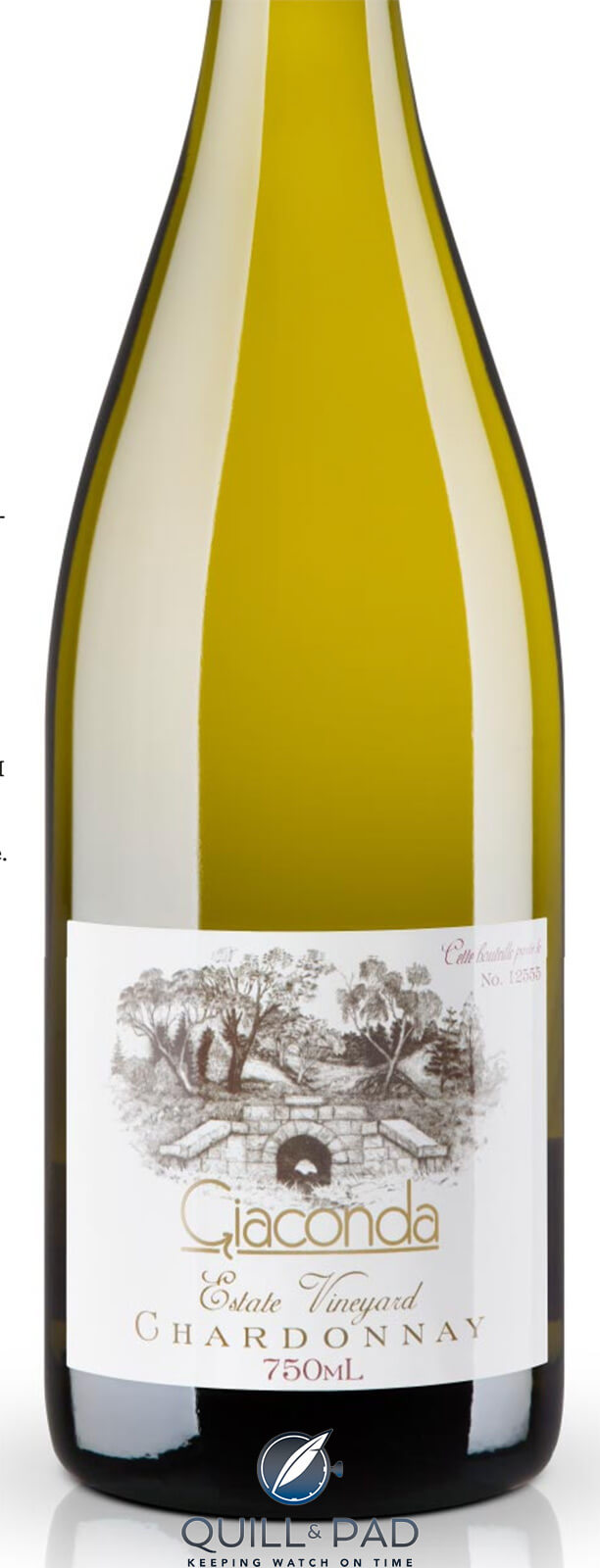
Giaconda Chardonnay
I recall a lunch a few years back where we all submitted something a bit special, and did it blind. A friend had contributed a great vintage of Bonneau du Martray Corton Charlemagne. I had the 1994 Giaconda. Needless to say, I would not be reciting this story if the Giaconda had not blown the Corton Charlemagne (and I am a great fan of Bonneau du Martray) out of the water.
Being from a small vineyard in a fringe region, Beechworth, conditions from certain vintages can be such that they do not assist. These guys do not have the luxury of sourcing fruit from all over the place and no doubt would not want it – these are wines that reflect their terroir. So, sometimes the wine might not be absolutely scintillating, other times it is wine to drink on bended knee (and even in those so-called lesser years, the wine is still exceptional).
The problem, as it is around the world for great wines such as these, is that they are very limited, and demand was never higher than for their ’21, given the reputation of the vintage, the early hype for this wine, and the fact that there was no 2020, given the bushfires in the region and the smoke from them.
As we have mentioned, 2021 is truly an exceptional year and the Giaconda Chardonnay is surely the greatest yet released. Some critics have said it is the greatest Chardonnay ever made in this country and far for me to argue. Erin Larkin who covers Australia for Parker’s Wine Advocate gave it 100 points. Andrew Caillard MW, one of the finest tasters on the planet, also gave it 100. One of our longest serving and most respected critics, Huon Hooke, well known for being a touch more miserly than most of us, gave it 98. Personally, 100, every day of the week.
Winemaking has remained largely consistent over the years. Handpicking, a light crushing followed by basket pressing, fermentation with indigenous yeasts in oak (the cellar is gravity-fed), and then around a year and a half in French oak for maturation. This vintage, 30% new. The wine also goes through 100% malolactic fermentation. Over the years, there have been some spectacular releases – that 1994 I mentioned, the amazing 1996, 1998, 2002, 2004, 2008, 2010 (another personal favourite), 2012, 2018 (and plenty in between – as an aside, interesting to note how closely they follow top years in Champagne, which is no doubt purely coincidental).
So how was it received?
One of our number, apparently still fighting to have the Judgement of Paris overturned, announced that he could provide any number of Village wines that would leave this in the dust. Personally, I think he is talking complete rubbish. Another had a very different view and was as much of a fan as I am, though he took the view it should be drunk now. That surprised me as I am sure that well cellared bottles will be glorious for a decade, probably two. His view was simply that it was so good, it can’t get better, hence why wait (so we’ll forgive him for that). A couple of those present picked it as a Grand Cru white Burgundy from Blain Gagnard, though they did not specify which Grand Cru.
For me, this is still very young and while any bottle opened now will provide great pleasure, leave it for five or six years at least, if you can. I decanted it an hour or so before drinking, but it could probably do with twice that or more. The flint, mineral, crushed shells and oatmeal are all immediately evident. Intense, concentrated and yet ever-so-finely balanced, with a peaches-and-cream texture, this is a monumental Chardonnay with truly extravagant length. Stonefruits, beeswax, quince, hazelnuts and more. There is oak, but it is sublimely integrated. The wine is already showing serious complexity. It is a world class wine, and just at the beginning of what will be an ever-increasingly glorious journey. For me, 100.
One very rarely gets to drink wines of this quality, whether from Burgundy or the New World.
You might also enjoy:
Leeuwin Estate Chardonnay: Walking the Tightrope between Elegance and Sheer Power
Main Ridge Estate: Great Value In Small Quantities From Australia’s Mornington Peninsula
Bindi Block 8 Pinot Noir Australian Wine: A Peacock’s Tail Of Exploding Flavors
Sparkling Wine From Tasmania: Not Yet Champagne Level, But Very Close
Leave a Reply
Want to join the discussion?Feel free to contribute!

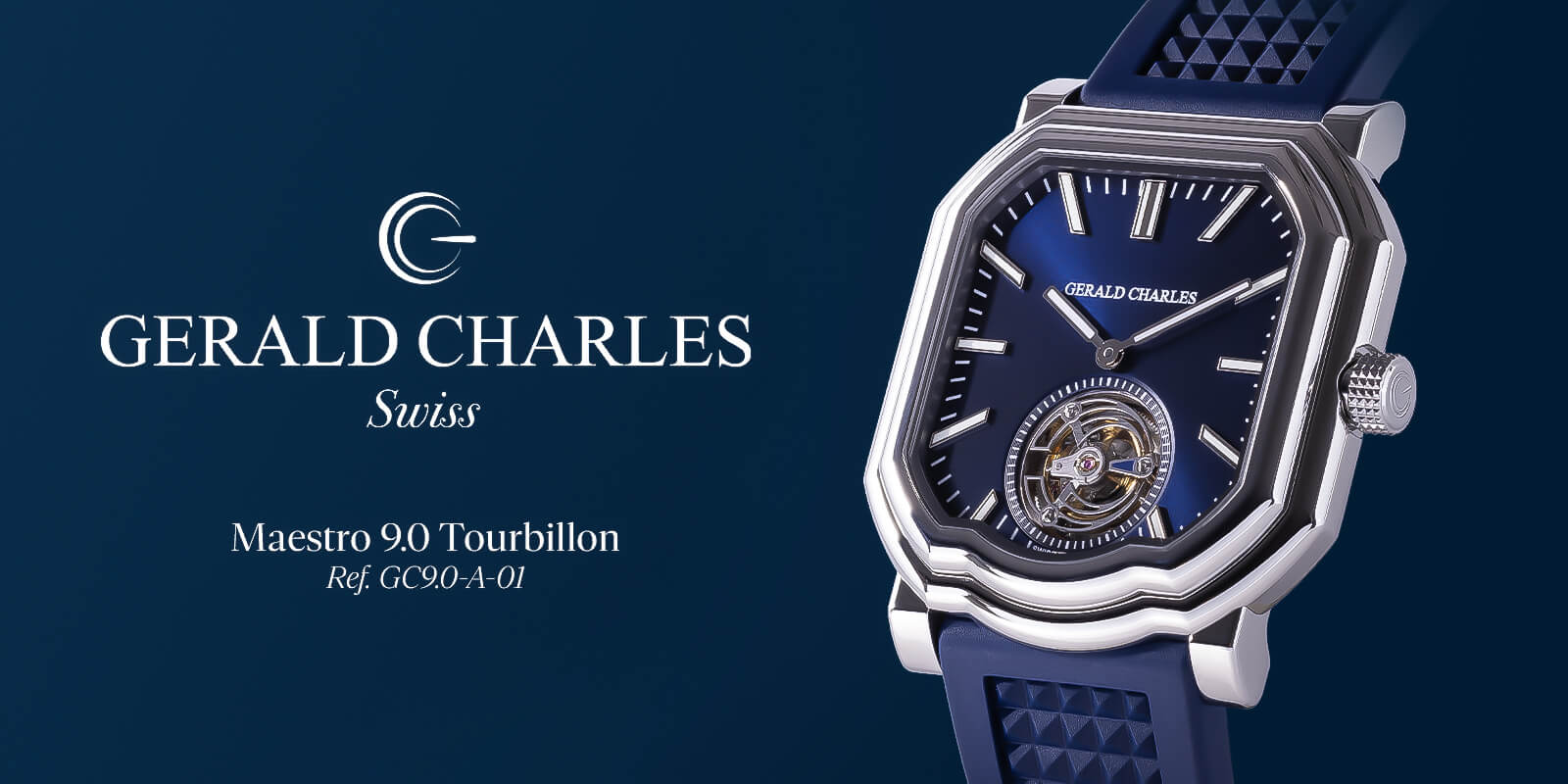
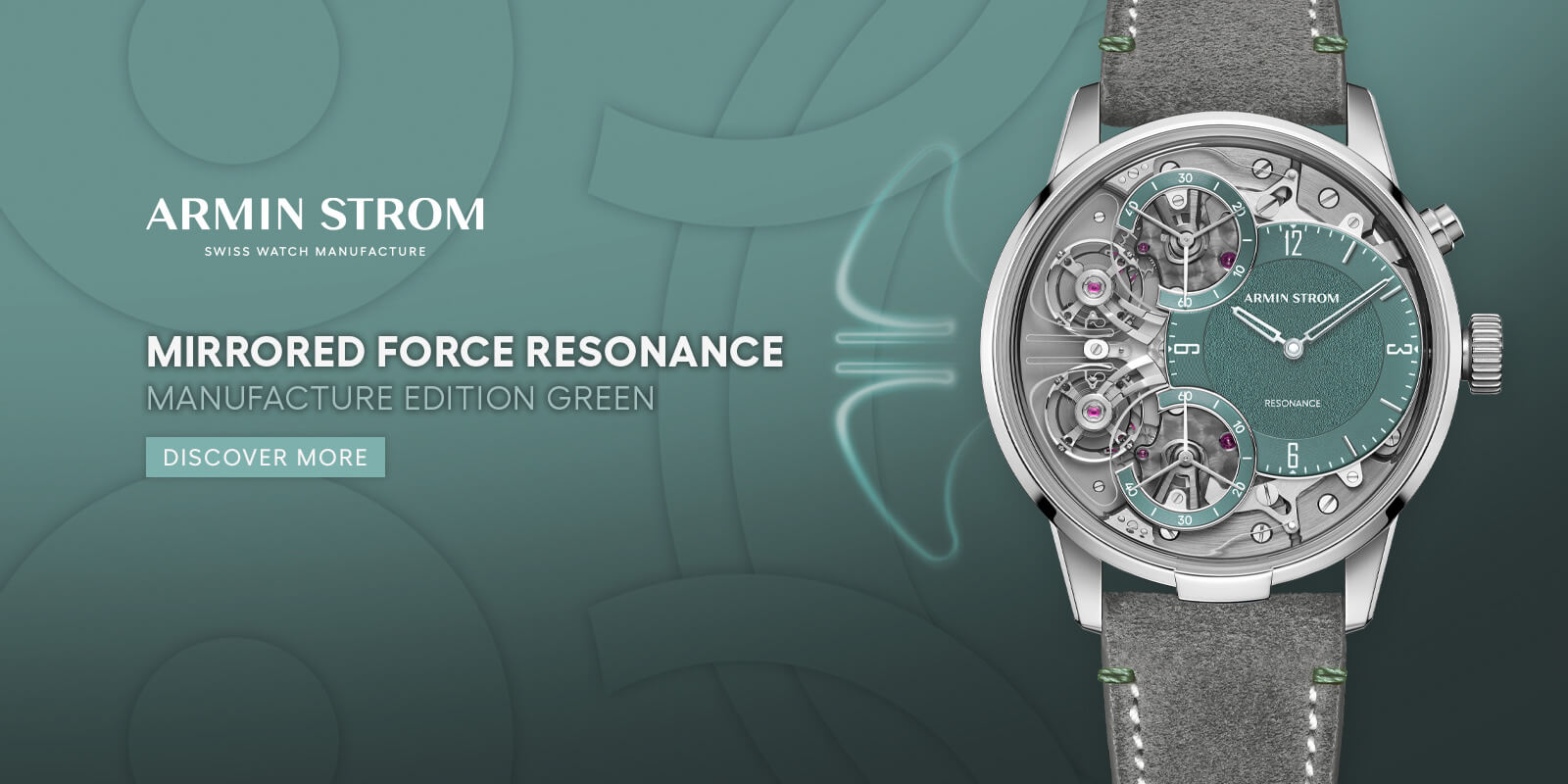
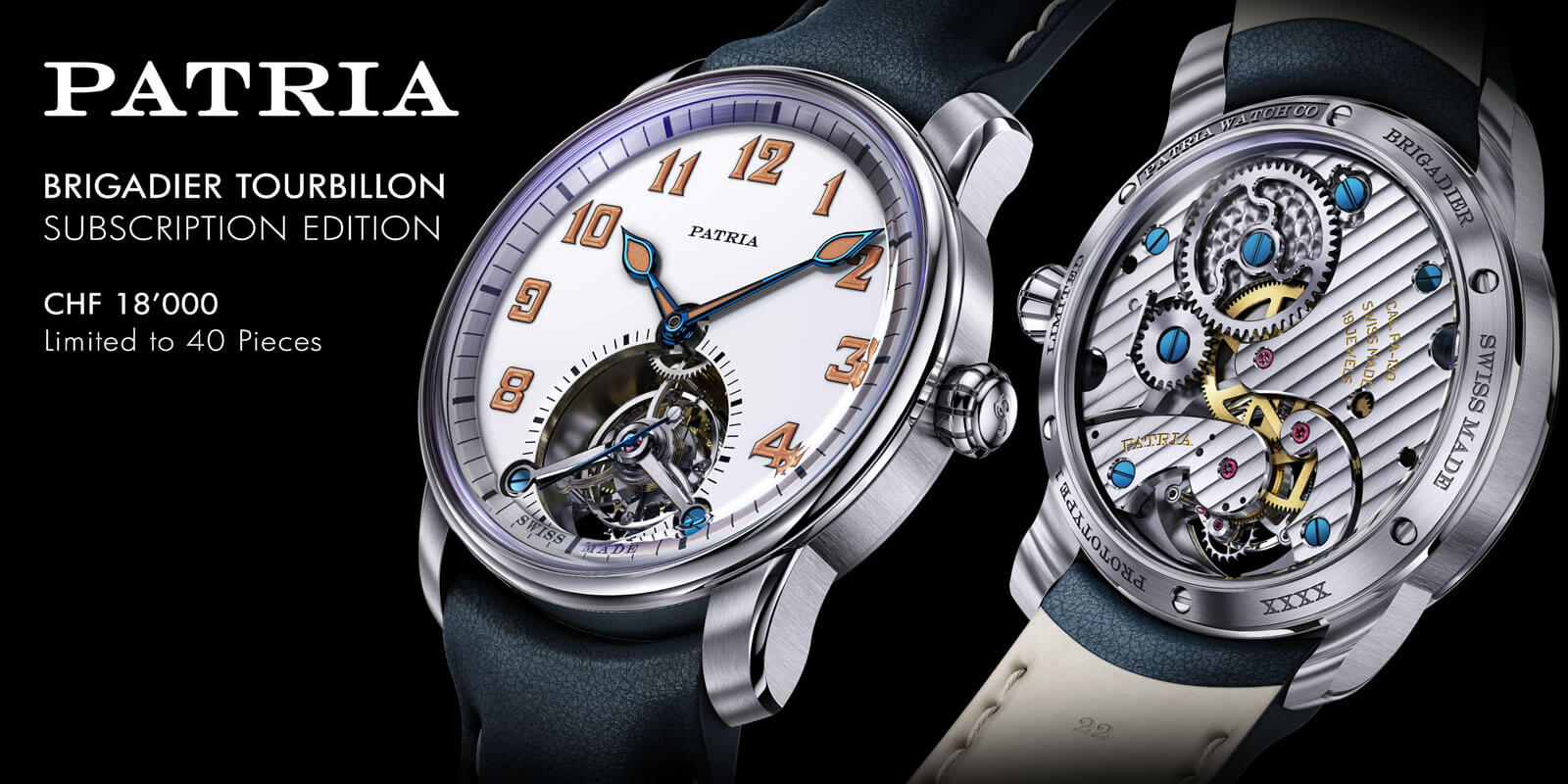


Love the article, but the majority of these wines are out of the range of mere mortals, particularly these days of tight budget6.
How about some great Chardonnays and Pinot in the $30-$60 range.
Hi Georgie, very pleased you enjoyed the article, but you are on a watch site where the cheapest watches would be the equivalent of cases of any of these wines. The aim of this article was to identify a few wines which sit alongside the best of Burgundy. Sadly, that is never going to be that range.
I do understand what you say. I think though, perhaps here is not the place you’ll find those wines too often, but there are certainly plenty of sites that would cater to those needs.
I also write for WinePilot (www.winepilot.com) which will have many recommendations, from myself and others, that will more than fit your needs.